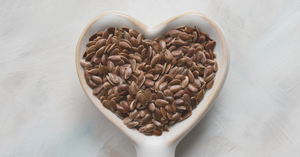Abortion, whether medical or surgical, can be both physically and emotionally tiring. And the recovery process can bring immense discomfort and pain. So, if you, too, are going through this, know that nearly 25 percent of all pregnancies globally end in abortion, according to the World Health Organization.
Pain after an abortion is normal as the uterus contracts to return to its original size. The level of pain varies depending on the type of abortion, individual pain tolerance, and your overall health. Most women experience cramping similar to period pain, while others may feel more intense discomfort.
Fortunately, there are ways to manage this pain effectively while ensuring a smoother recovery. Read this article to find out five effective ways to deal with abortion pain.
Pain Medication and Anti-Inflammatories
Over-the-counter (OTC) pain relievers such as ibuprofen (Advil, Motrin) or acetaminophen (Tylenol) are often recommended after an abortion. Ibuprofen is particularly effective because it reduces inflammation and cramping.
Here’s the recommended dosage.
- Ibuprofen: 400–600 mg every 6–8 hours (not exceeding 3200 mg per day)
- Acetaminophen: 500–1000 mg every 4–6 hours (not exceeding 4000 mg per day)
- Avoid aspirin, as it may increase bleeding.
If your pain is severe, your healthcare provider may prescribe stronger pain medication, but for most women, OTC painkillers provide sufficient relief.
Heat Therapy for Cramping Relief
A simple yet highly effective way to manage abortion pain is heat therapy. Applying warmth to the lower abdomen can actually help relax the muscles and reduce uterine contractions.
Here are a few ways you can do so.
- Heating pads or hot water bottles placed on the lower abdomen for 15–20 minutes at a time
- Warm baths, but not too hot, can help relax the body and ease discomfort.
- Warm compresses with a soft towel soaked in warm water
Heat therapy is completely natural, has zero side effects, and works almost instantly to ease cramping.
Stay Hydrated and Eat Nutrient-Rich Foods
Hydration and nutrition too play a crucial role in recovery. After an abortion, your body is healing, and proper nourishment can reduce pain, fatigue, and dizziness.
Here’s what you must incorporate into your diet.
- Water & Herbal Teas: Drink 8–10 glasses of water daily to help reduce bloating and discomfort.
- Iron-rich foods such as spinach, lentils, red meat, and beans to help restore blood levels
- Magnesium and potassium, which can be found in bananas, nuts, avocados, and dark chocolate, to help relax muscles and prevent cramping
- Protein and healthy fats from eggs, fish, and nuts to support hormonal balance and tissue repair
Gentle Movement and Rest
Yes, while resting is essential, light activity can actually help alleviate pain and speed up recovery. However, complete bed rest may lead to stiffness, bloating, and prolonged discomfort. You can go for short walks, even around your home, to boost circulation. Besides, stretching or light yoga can also help relieve tension in the lower body. You may also engage in deep breathing exercises to relax your pelvic muscles and ease stress.
If you feel exhausted, allow yourself adequate sleep and rest. Because at the end, sleep is essential for hormonal balance, emotional healing, and overall recovery.
Emotional Care and Support
The physical pain of an abortion often comes with emotional waves. Hormonal changes, societal stigma, or personal emotions can further add to the distress. In short, emotional healing is just as important as physical healing.
You can talk to a trusted friend, partner, or therapist or engage in self-care activities such as journaling, meditation, or listening to soothing music. You may also join support groups where you can connect with others who understand your experience.
Conclusion
Recovering from an abortion is a unique journey for every woman. While pain is a natural part of the process, there are effective ways to manage discomfort and heal smoothly.
If the pain becomes severe, doesn’t improve, or is accompanied by fever, heavy bleeding, or foul-smelling discharge, seek immediate medical attention.








Be the first one to comment on this story.